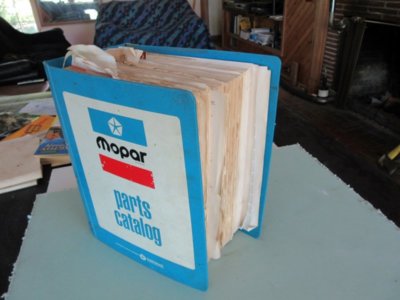Rooster
Well-Known Member
I was recently given a 1969 model year parts manual...interesting stuff in there but. Can anyone explain just how in the hell you read those things. I understand some of the small stuff now, like the 8 and 6 signifying engine size, but what about all the one's and two's in columns and rows and all the letters?
I've also seemed to notice as I have one of those Dave Wise manuals that lists some parts numbers but they are different. Was there any discrepancy between parts numbers in the original production parts and the parts a fella would get from from the dealer guy looking it up in one of these manuals. In other words are the part numbers different.
I've also seemed to notice as I have one of those Dave Wise manuals that lists some parts numbers but they are different. Was there any discrepancy between parts numbers in the original production parts and the parts a fella would get from from the dealer guy looking it up in one of these manuals. In other words are the part numbers different.


















